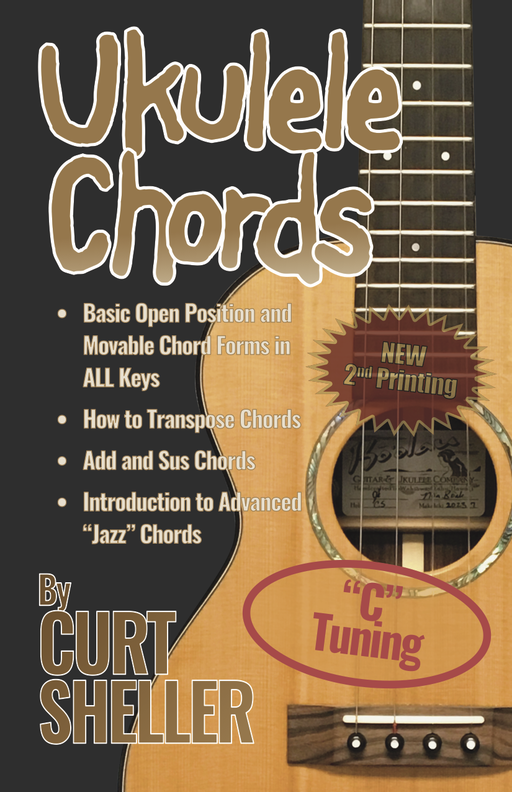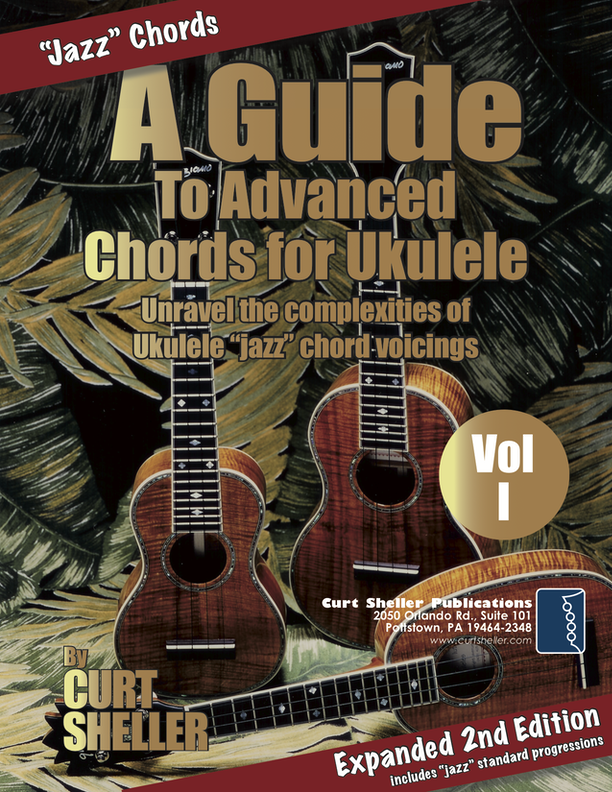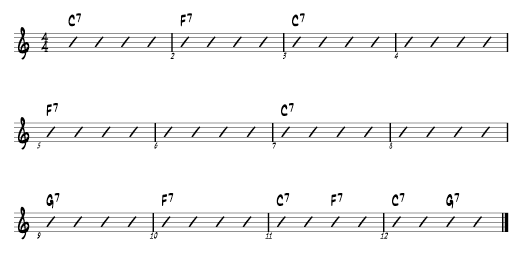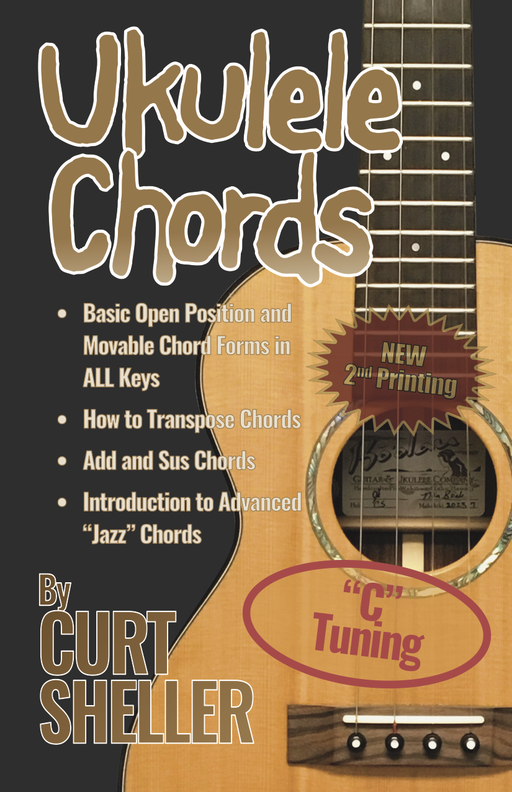Open position C7 chord and its movable form and variations.
Open position C7 and its movable form and variations - Sevenths, Major Sevenths, Minor Sevenths, Diminished, Augmented chords sus and add chords.
Available for Premium Site Access Plans Only




- 1 – the Root or letter name of C7 is C
- 3 – the third of C7 is E
- 5 – the fifth of C7 is G
- b7 – the flat seventh of C7 is Bb


 Use the Root or perceived root of the chord to transpose to different keys.
Use the Root or perceived root of the chord to transpose to different keys. A larger sized transposition chart is available in the Ukulele Chords book. This is the book these expanded chord lessons are based on.
A larger sized transposition chart is available in the Ukulele Chords book. This is the book these expanded chord lessons are based on.

Chord Progressions
Take lesson one's practice progression and make all the chords a seventh.
The Blues are at the heart of all American music. From the Rock, Country and Folk to Jazz. Making the form a great way to get a handle on this weeks chord.
Blues Practice Progressions
The Blues are at the heart of all American music. From the Rock, Country and Folk to Jazz. Making the form a great way to get a handle on this weeks chord.
Blues in the key of C

Blues in the key of F

Related Lessons, Videos, Lesson Series, Songs, Books & Reference Charts, Resources & Assets, Workshops are below.

Finally, learn the names of the notes of the ukulele fingerboard in C tuning .

Learn the six fingering principles to navigating the ukulele fingerboard. Fingering is one of the most universal topics. Book: Six Secrets of the Ukulele Fingering

Harmonic Analysis is the understanding of the functional sequence of chords. It is the process used to analyze the harmonic structure of a progression, song or composition. Book: Harmonic Analysis for Scale Selection and Chord Substitution

Learn to read single note melodies in the first/open position is a lot easier than you might think. Book: Ukulele – Reading Music Series – Primer

An organized collection of daily practice and reference material for the contemporary ukulele player for developing the vocabulary and knowledge necessary for single note playing. Book: Daily Practice Material for the Contemporary Ukulele
Checkout the Books & Reference Charts for additional Handy, Dandy Reference Charts.

Ukulele Fingerboard Chart for C Tuning, Low or High G – G C E A

Ukulele Fingerboard Chart for G Tuning, Low or High A – D G B E

A handy reference chart of all 15 major and relative minor key signatures. US Letter 8.5 x 11 sized (ANSI-A), A4
Checkout the Books & Reference Charts for additional Handy, Dandy Reference Charts.




.jpg)